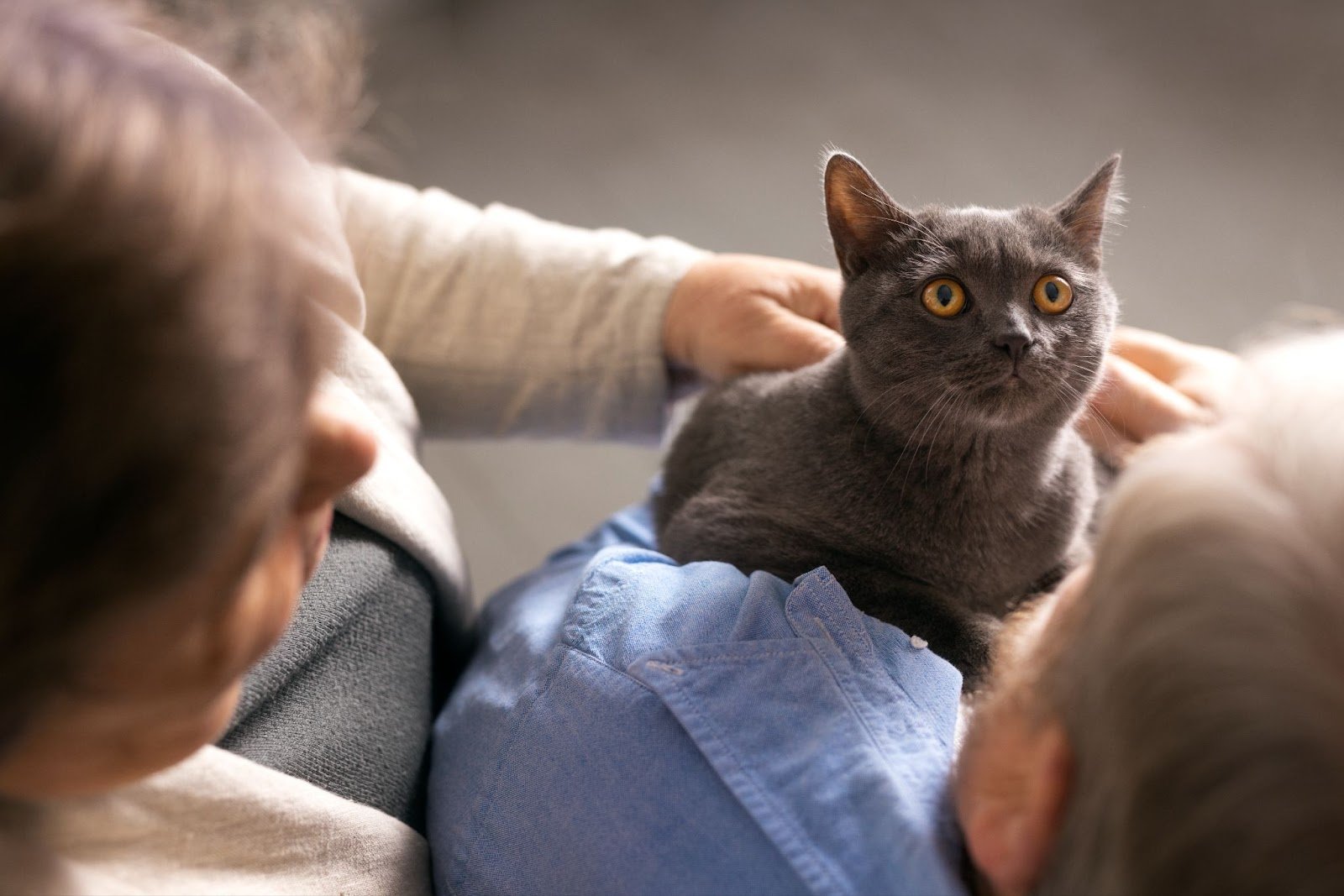Cats, like humans, can experience anxiety. Whether it’s due to a new environment, unfamiliar guests, loud noises, or even a trip to the vet, feline anxiety can manifest in various ways, including hiding, excessive grooming, aggression, or destructive behavior.
If your furry friend seems on edge, knowing how to calm an anxious cat can make a world of difference in their well-being. In this article, we will explore the causes of feline anxiety, signs to watch out for, and effective strategies to help your cat feel safe and secure.
Understanding Feline Anxiety
Before diving into solutions, it’s important to understand why cats become anxious in the first place. Here are some common triggers:
- Environmental Changes: Moving to a new home, rearranging furniture, or introducing new pets or family members can stress out your cat.
- Loud Noises: Thunderstorms, fireworks, construction work, or even a loud TV can trigger anxiety.
- Separation Anxiety: Some cats become stressed when left alone for extended periods.
- Lack of Socialization: Cats that haven’t been properly socialized as kittens may be more prone to anxiety.
- Medical Issues: Underlying health problems such as hyperthyroidism or pain from arthritis can contribute to stress.
Recognizing the cause of your cat’s anxiety is the first step in learning how to calm an anxious cat effectively.
Signs of an Anxious Cat
Cats communicate their distress in various ways. Common symptoms of anxiety include:
- Hiding more than usual
- Excessive meowing or growling
- Aggressive behavior
- Overgrooming or self-mutilation
- Avoiding the litter box
- Pacing or restlessness
- Loss of appetite
If you notice any of these behaviors, it’s time to take action to comfort your furry friend.
Effective Ways to Calm an Anxious Cat
1. Create a Safe Space
When they feel overburdened, cats need a calm, cozy place to return to. This could be a specific cat tree, a hiding place beneath the bed, or a comfortable nook with a soft bed. Make sure this section of your house is away from busy places and loud noises.

2. Make Use of Calming Items
A number of products are available to assist calm cats who are nervous, including:
Pheromone diffusers, such as Feliway, provide a feeling of security by simulating the facial pheromones of cats.
Herbs like chamomile and lavender or pheromones can be utilized to make calming collars.
Weighted blankets: Light pressure can be soothing to certain cats.
3. Maintain a Consistent Routine
Cats thrive on routine, and sudden changes can make them anxious. Feeding, playtime, and bedtime should happen at the same time each day. This predictability helps reduce stress and provides reassurance.

4. Provide Plenty of Enrichment
Boredom and lack of stimulation can contribute to anxiety. Engage your cat with interactive toys, puzzle feeders, and scratching posts. Rotating different toys can help keep their interest and prevent boredom. Toys that mimic prey, such as feather wands or robotic mice, can stimulate their natural hunting instincts. Additionally, food-dispensing puzzle toys can provide mental stimulation while rewarding their curiosity.
Cat trees and window perches allow them to observe their surroundings, which can be soothing. If possible, set up a bird feeder outside a window to give your cat something engaging to watch. You can also provide cat tunnels, climbing shelves, and designated play zones to encourage exploration and movement. Regular interactive play sessions with you, such as using a laser pointer or a simple string toy, can help strengthen your bond while also reducing anxiety.
5. Reduce Triggers
If your cat is scared of loud noises, consider using white noise machines or soft music to drown out disruptive sounds. Classical music, specifically composed for cats, has been found to have a calming effect. When thunderstorms or fireworks are expected, providing a hiding spot with cozy blankets or an enclosed cat bed can help your cat feel safer.
For cats with separation anxiety, leaving an item with your scent (like a worn T-shirt) can provide comfort. You can also try leaving the radio or TV on at a low volume to create a sense of presence. Interactive pet cameras with treat dispensers allow you to check in on your cat and even speak to them when you’re away. Additionally, gradual desensitization techniques, such as practicing short departures and rewarding calm behavior upon return, can help ease anxiety over time.
6. Encourage Gentle Socialization
If your cat is anxious around people or other animals, introduce them gradually. Allow them to approach new situations at their own pace rather than forcing interaction. Start by providing a safe space where your cat can observe from a distance. Use treats and praise to reinforce positive experiences when they show curiosity or calm behavior.
If introducing a new pet, keep initial interactions brief and supervised. Swap scents between animals by exchanging bedding or using a soft cloth to rub one pet and then the other. This allows them to become familiar with each other’s scent before face-to-face meetings. For visitors, encourage guests to sit quietly and allow the cat to initiate contact rather than attempting to pick them up or pet them immediately.
Slow exposure to different sounds and environments can also help build confidence. Using clicker training, where positive reinforcement is given for small steps toward socialization, can be an effective way to reduce fear and build trust over time.

7. Try Natural Remedies
Certain herbs and supplements can help reduce anxiety in cats. Some popular options include:
- Catnip: While it excites some cats, it has a calming effect on others.
- Valerian root: Known for its sedative properties.
- CBD oil: Some pet owners report success using CBD to ease anxiety (consult your vet first).
- Chamomile and passionflower: Natural relaxants that can be used in cat-safe formulations.
8. Consider Professional Help
If your cat’s anxiety is severe, consulting a veterinarian or feline behaviorist is a good idea. They can rule out any medical conditions and may recommend anti-anxiety medications if necessary.
What to Avoid When Dealing with an Anxious Cat
While learning how to calm an anxious cat, it’s just as important to know what not to do:
- Avoid Punishment: Never scold or punish an anxious cat; it will only make them more fearful.
- Don’t Force Interaction: Let your cat come to you when they feel comfortable.
- Don’t Ignore the Problem: Chronic stress can lead to serious health issues, so take signs of anxiety seriously.
When to See a Vet
If your cat’s anxiety persists despite trying these strategies, it may be time to seek veterinary advice. Anxiety can sometimes be linked to medical conditions, so a thorough check-up is necessary. Additionally, your vet can recommend tailored solutions, including behavioral therapy or medication if needed.
Final Thoughts
Knowing how to calm an anxious cat is essential for any cat owner. By understanding their triggers, providing a secure environment, and using calming techniques, you can help your feline friend feel more at ease. Patience and consistency are key, and with time, your cat can overcome anxiety and lead a happier, stress-free life.
